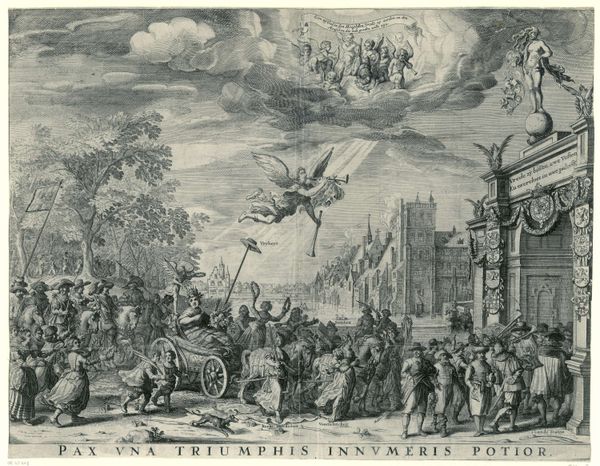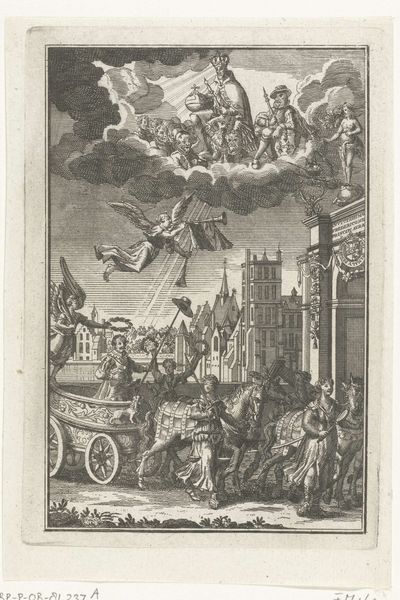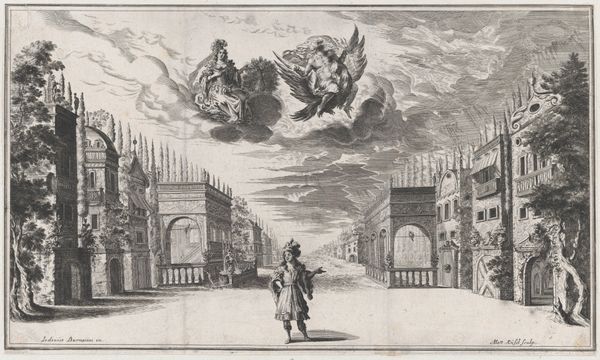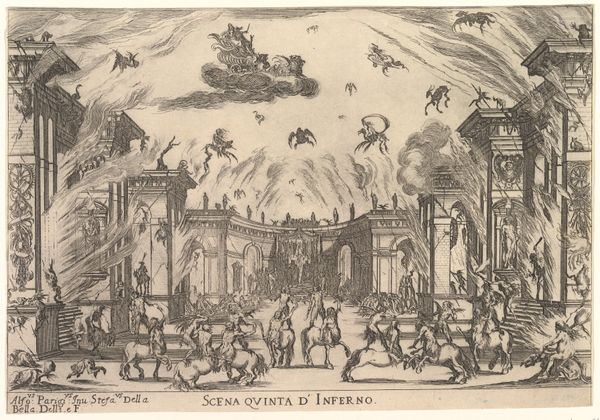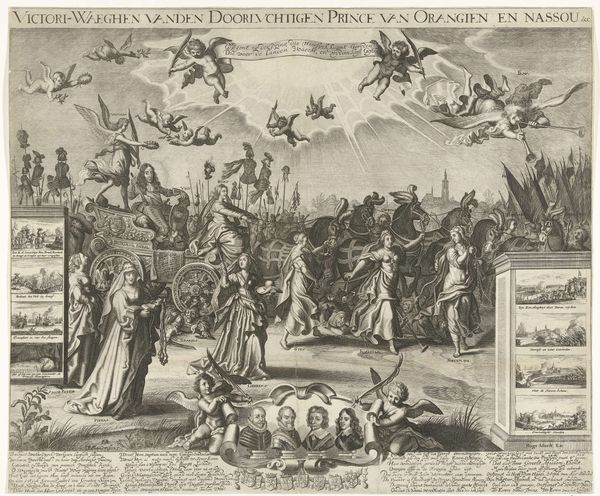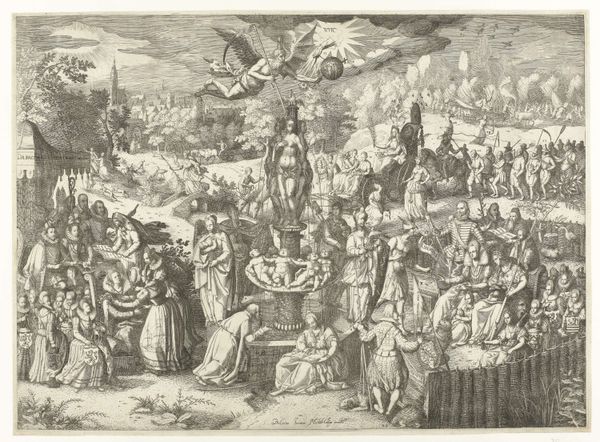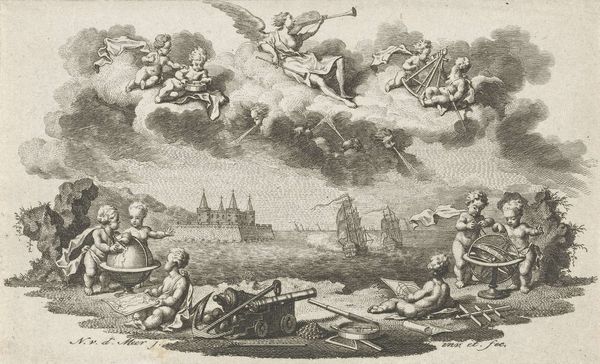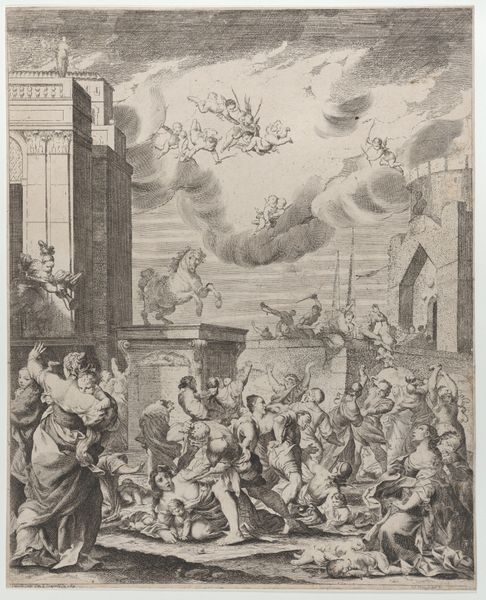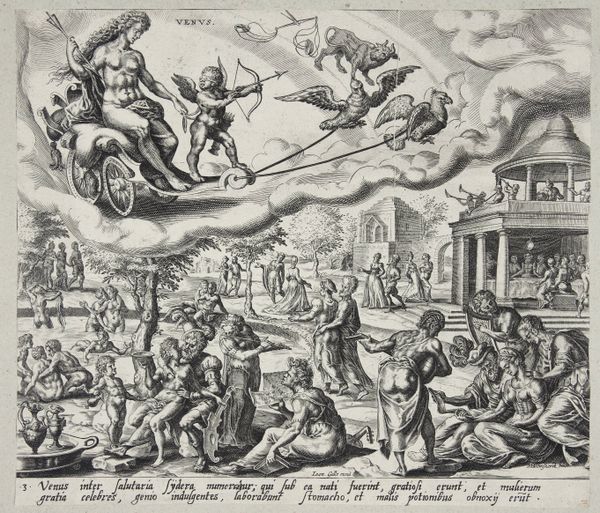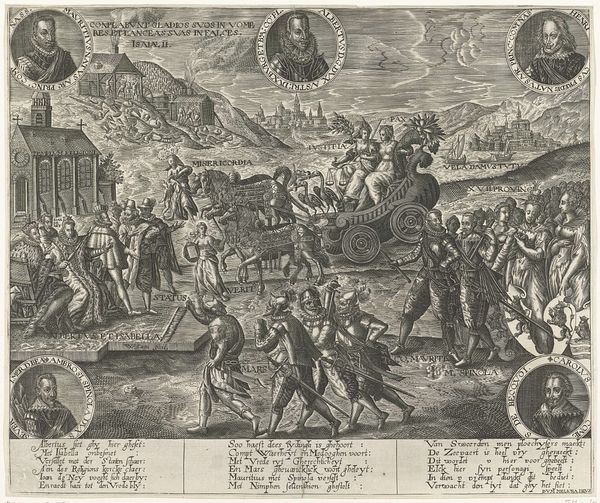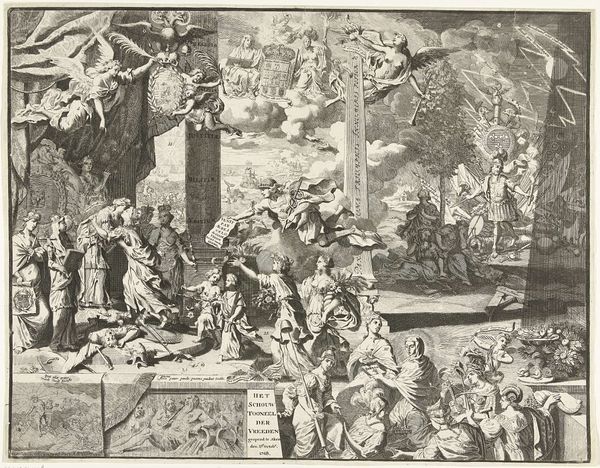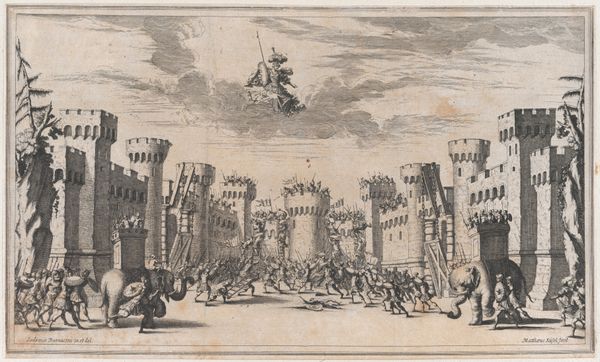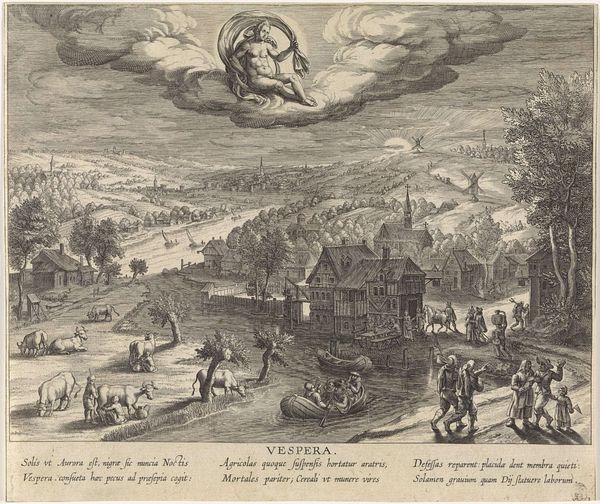
Charles II entering The Hague in a carriage with the Mauritshuis on the right; from 'Verhael van de Reys van Carel II, Coning van Groot-Brittannië, in Hollandt van 25 Mey tot 2 Junij 1660' 1660
0:00
0:00
drawing, print
#
drawing
#
light pencil work
#
quirky sketch
# print
#
pen sketch
#
pencil sketch
#
human-figures
#
incomplete sketchy
#
personal sketchbook
#
sketchwork
#
ink drawing experimentation
#
pen-ink sketch
#
horse
#
human
#
fantasy sketch
#
arm
#
building
Dimensions: Sheet: 13 1/16 × 15 7/8 in. (33.2 × 40.3 cm) Plate: 12 1/8 × 15 1/4 in. (30.8 × 38.7 cm)
Copyright: Public Domain
This engraving by Pieter Philippe captures Charles II entering The Hague, a scene filled with symbols of power and restoration. Above the procession, putti and allegorical figures float amidst the clouds, bearing emblems like laurel wreaths, scales, and heraldic shields. The laurel wreath, a classical symbol of triumph, appears in Roman art to denote victory and imperial glory. Similarly, the scales represent justice and balance, ideals crucial for a restored monarchy seeking to heal a nation divided by civil war. Yet, these symbols are never static. Consider the figure of Justice: In ancient depictions, she carries a sword, but here, the emphasis is on harmony, reflecting a desire for reconciliation rather than retribution. These images tap into a collective memory, reminding us of the cyclical nature of power. Monarchs rise and fall, but certain symbols endure, adapting to new contexts while carrying echoes of past meanings. It’s a psychological drama played out on the stage of history, where emblems of authority strive to legitimize themselves in the eyes of the present.
Comments
No comments
Be the first to comment and join the conversation on the ultimate creative platform.
